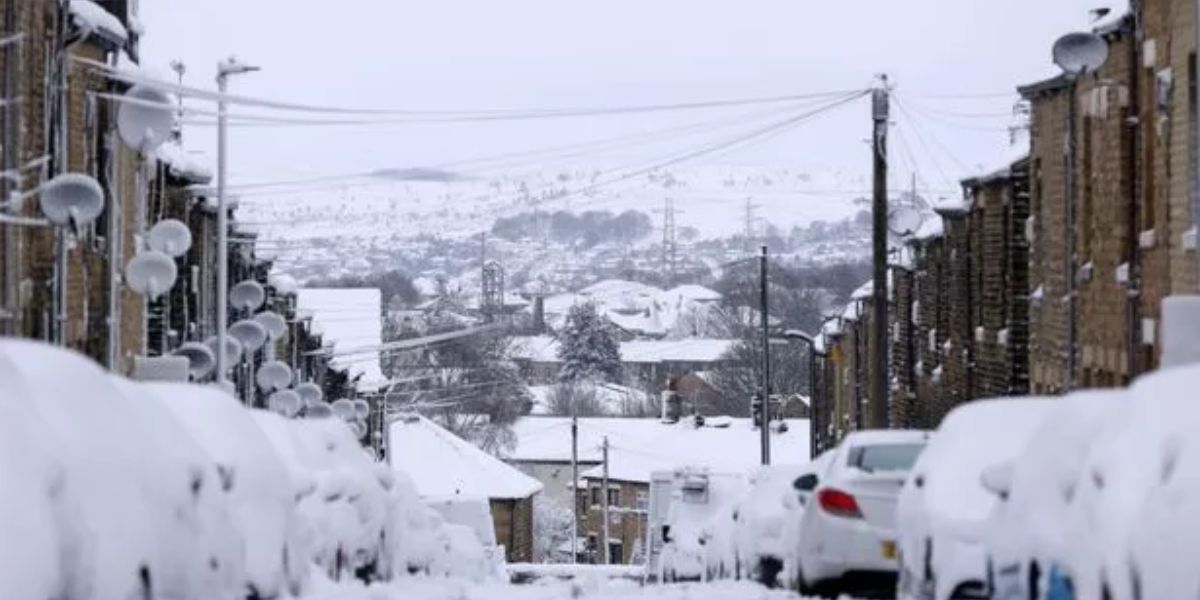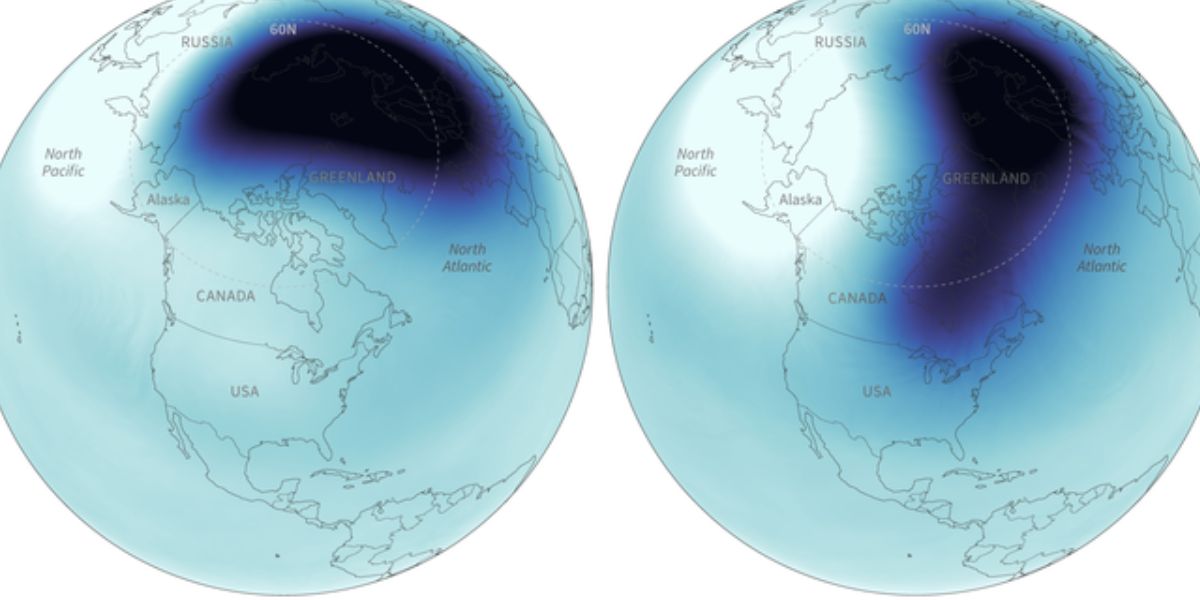The term ‘polar vortex’ has grabbed attention in recent times due to the extreme winter weather in the Northern Hemisphere. It has to be noted that the polar vortex plays an important role in shaping winter weather patterns across the globe. This cold weather system can bring heavy snow, extremely cold winters and icy conditions to several places, especially around Christmas. Knowing what a polar vortex is and how it works can help us understand why winter may feel much harsher during the holiday season.
What is the polar vortex?
It is a cold air system that spins around the Earth’s poles all year. It is typically strongest during winter and located high in the atmosphere, in the stratosphere, above the Arctic region of the Northern Hemisphere. Normally, the cold air stays around the poles, but sometimes certain factors weaken the vortex, resulting in the cold air to escape towards lower latitudes, move south, and bring freezing weather to other places.
The polar vortex’s impact on winter weather during Christmas
When the polar vortex weakens, it leads to a polar plunge, a phenomenon where cold Arctic air moves into places like the U.S., Canada and parts of Europe, leading to sudden and extreme winter weather. This includes heavy snow and freezing temperatures in various regions.
Under normal circumstances, the polar vortex acts like a barrier, keeping the cold air within the poles. But when this barrier weakens, often due to disturbances in the jet stream, the frigid air escapes and moves south, bringing severe cold and storms to those places.
Cause of winter storms becoming more extreme
Over the past decade, winter storms in several regions of North America and Europe have become stronger and more extreme. Researchers believe that this is linked to climate change, emphasizing the rapid rise in temperatures in the Arctic region, where warming is happening at a much faster pace than in other parts of the world. This phenomenon is called Arctic amplification.
The temperature difference between the cold polar air and the warmer air in southern regions becomes smaller as the Arctic region warms up gradually over time. This weakens the jet stream, which usually keeps that polar vortex in check. When the jet stream weakens, it becomes unstable and more prone to fluctuations. This allows cold Arctic air to move farther south than normal, causing more frequent and intense winter storms in places that usually don’t experience such harsh winter conditions.
What’s the role of climate change in polar vortex behavior?
Climate change is affecting the polar vortex, which in turn can lead to more extreme winter weather. Although it might seem odd that global warming could cause colder winters, research shows that it does!
For example, in early 2021, a major disturbance in the polar vortex caused unusually low temperatures in the U.S., especially in Texas, which experienced an unusually deep freeze. This event was a clear example of how climate change can influence the polar vortex and lead to more severe winter storms in recent times.
Polar vortex events in the past
There have been several polar vortex events in recent years, such as the North American cold wave in 2014, the winter in Europe during 2018-19 and the Texas freeze in 2021.
Current scenarios
The UK might have a chilly and snowy Christmas
As per latest weather maps from WXCharts, this year, the UK might have a chilly and snowy Christmas, as a strong and stormy Polar Vortex is moving southward, which could bring heavy snow of up to 20 cm in several places just before and on Christmas Day.
Polar vortex to affect the US during Christmas
Also, as per AccuWeather, in parts of the US, a late-season polar vortex could keep winter-like temperatures into early spring, delaying the arrival of warmer weather. The report also stated that throughout the rest of December, California is expected to experience a rainy and snowy period, with several storms forecast to hit the Golden State starting this week and lasting until Christmas. After a series of atmospheric rivers in late November, California has been experiencing a dry spell.
Future predictions
Climate experts believe that as the Arctic continues to warm over time, disturbances in the polar vortex could become more common and intense in the future. Although it is difficult to predict specific weather events, the overall trends suggest that cold spells and winter storms might happen more often in the future, even with rising global temperatures.
Regions that don’t usually experience harsh winter conditions like the southern United States or southern Europe might need to improve their infrastructure and plan disaster management to handle such weather. As the polar vortex becomes a more frequent weather pattern, scientists and weather experts are working to enhance the predictability of these events so that it can help in giving people warnings in advance and help reduce the impact of its effects.








